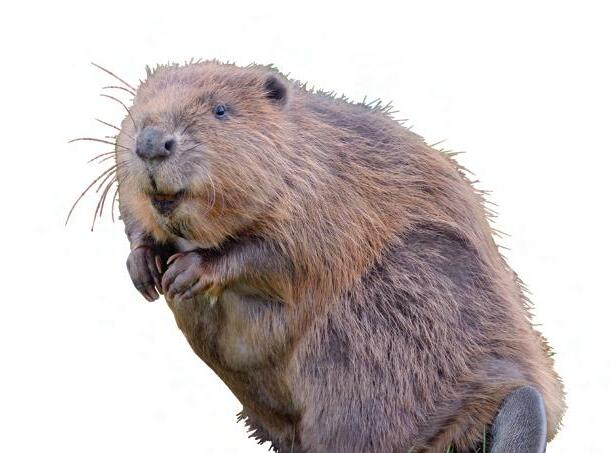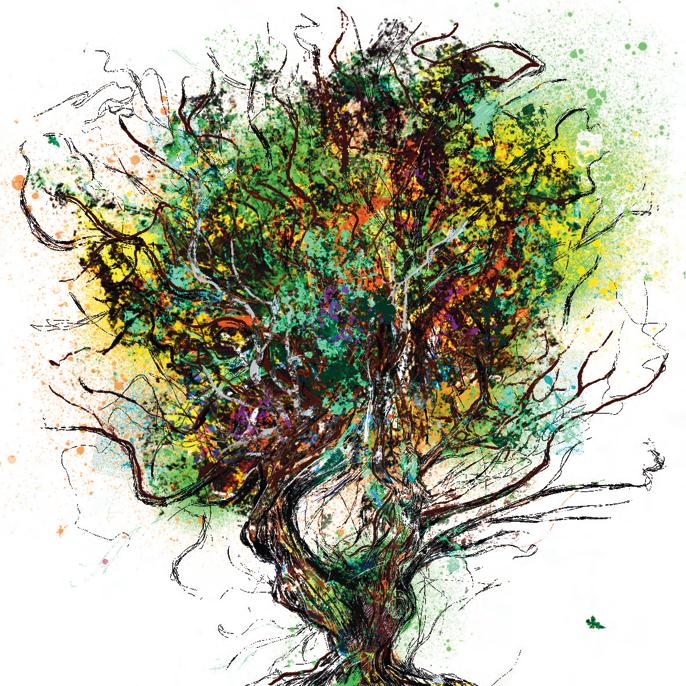
6 minute read
UK News
UK UPDATE
Beavers are making a comeback across the UK
Advertisement
You made the government give a dam!
ngland has taken a few tentative steps towards seeing a return of beavers to the wild, following new legislation announced by Defra. The legislation will provide legal protections for beavers in England, making it an offence to deliberately capture, kill, disturb, or injure beavers, or damage their breeding sites or resting places, without holding the appropriate license. The legislation is scheduled to come into force in the autumn.
These new protections could pave the way for beavers to be released into the wild in England under license, finally making a widespread comeback after being hunted to extinction in the 16th century. This decision echoes the path taken in Scotland, where beavers were declared a European Protected Species in 2019, affording them similar protections to those proposed in England.
The legislation was initially due to be laid in parliament on the 19th of July, but the UK Government held it up at the last minute. Following outrage from nature charities and the wider public, including lots of Wildlife Trust supporters, the decision was reconsidered and the announcement made just a few days later.
Beavers are ecosystem engineers. Their actions create thriving and dynamic wetlands that bring a wealth of benefits to both nature and people, including playing a critical role in adapting to a changing climate. Long-term studies of beavers from the Scottish Beaver Trial and in enclosures in England have demonstrated the improvements they can bring to our rivers and wetlands, making it clear that beavers belong in our landscape.
Commenting on the UK Government’s decision, The Wildlife Trusts’ chief executive Craig Bennett says: “The widespread return of wild beavers can be a game changer for restoring lost wetlands, benefitting all kinds of wildlife, and helping people by holding water back in the landscape, reducing the risk of wildfires and reducing the risk of flooding downstream. Bringing back wild beavers isn’t just a dream, it is a critical part of addressing the climate and nature crises.”
Whilst The Wildlife Trusts believe bringing back beavers is essential, reintroducing any ecosystem engineer is a delicate operation. Natural England is developing guidance on the management of beavers, setting out the actions that will or will not require a license. We are urging the UK Government to support ambitious and carefully targeted reintroduction projects, reward landowners who make space for wetlands created by beavers, develop management systems that protect beavers and resolve issues effectively, and support local beaver management groups to deliver advice and assistance.
The news of this legislation came as Wildlife Trusts around England celebrated the birth of beaver kits at enclosed projects on nature reserves. The Welsh Beaver Project, led by Wildlife Trusts Wales, also saw its first kit born at an enclosure at Montgomeryshire Wildlife Trust’s Cors Dyfi nature reserve.

Get the latest on our journey to bring beavers back to Britain at
wildlifetrusts.org/saving-species/beavers
The beaver comeback
2001 Kent Wildlife Trust bring the first beavers back to Britain in an enclosure at Ham Fen.
2009 First beavers officially released into the wild by the Scottish Beaver Trial.
2014 Beavers discovered living wild on the River Otter in Devon. Devon Wildlife Trust begin England’s first wild beaver trial.
2017 The Scottish Beaver Trial release more beavers to reinforce the population.
2019 Beavers designated a European Protected Species in Scotland.
2020 Beavers allowed to stay on the River Otter.
2021 Wildlife Trusts release a record number of beavers (17) into fenced areas across the Britain.
2022 Legislation announced to make beavers a protected species in England.
David Oakes
@David_Oakes @doakesdoakes
Ancient trees

You start by entering your postcode. A few moments later you’re rewarded with a map. Your home at the epicentre, with every veteran, ancient, and potentially superstar tree marked accordingly, radiating outward from your front door. This is the Ancient Tree Inventory.
My map shows the remains of the medieval village of Marsden. My oldest neighbour is Tree #158744 — simply “’44” to me. It’s a pedunculate oak, over 6.5 metres in girth and easily 500 years old. Maybe 600. Maybe more… Chances are that it is the last living survivor of long-lost Marsden.
Type in your postcode and you may discover you live next to one of hundreds of ‘celebri-trees’: perhaps the Tolpuddle Martyrs’ sycamore that birthed the Trade Union movement? Or maybe John Evelyn’s black mulberry, supposedly planted by Tsar Peter I as an apology for his drunken antics! Who knows what these trees really saw, but what’s important is that they remain.
A tree isn’t just one organism, it’s a metropolis for life. My Marsden oak can support well over 1,000 species: birds, mammals, invertebrates, lichens, fungi, bryophytes… Every nook of our nation’s biodiversity. In fact, the pedunculate oak supports more unique species than any other of our native trees. And the longer they stay in the ground, the more interconnected they become with the life they support. The late, great, Oliver Rackham said: “Ten thousand oaks of one hundred years are no substitute for one five-hundred-year-old oak tree.”
Our ancient trees are often found within ancient forests that have existed since our very first maps. Some could stretch back as far as the last ice age. Ever since, they have nurtured dense biological multi-species interactions. Without them, we’re just dusty skeletons living in housing estates.
This summer, wildfires exacerbated by human behaviour burned across the globe and parts of the UK reached unprecedented temperatures of over 40 degrees. Ironically, the shade of a tree may be your best bet at remaining cool. Through transpiration, the area beneath a tree remains degrees cooler than a similar area shaded by a man-made structure. But even as the country cooked, bulldozers were poised to tear down ancient trees for the government’s high speed rail link.
The Cubbington Pear Tree, #74902 on the Ancient Tree Inventory, was voted the 2015 “Tree of the Year”. Over 250 years old, it was then the second oldest wild pear in the country, possessing a girth of almost four metres. Pear trees’ fruit and blossom harbour abundant mammal, bird, and invertebrate life. This tree, and the biodiversity it homed, was destroyed in October 2020 so that Birmingham could become 12 minutes closer to London. On the Ancient Tree Inventory, the Cubbington Pear Tree is now simply marked as “Lost”.
Every tree lost is a blow to nature. Every ancient tree lost expedites the collapse of our nation’s biodiversity. We have to protect these ancient treasures.


Construction work for HS2 continues to damage and destroy irreplaceable habitats. Find out more and how you can help at
wildlifetrusts.org/hs2 PUTTING TREES ON THE MAP
The Ancient Tree Inventory is run by The Woodland Trust and maps over 180,000 of the oldest and most important trees in the UK. You can explore the trees near you, or add your own special trees, at ati.woodlandtrust.org.uk
David Oakes is an actor, podcaster, and ambassador for The Wildlife Trusts. When he’s not on set or treading the boards, he’s out walking in a glorious wild place talking to experts about the natural world and celebrating it in his podcast, Trees A Crowd.









